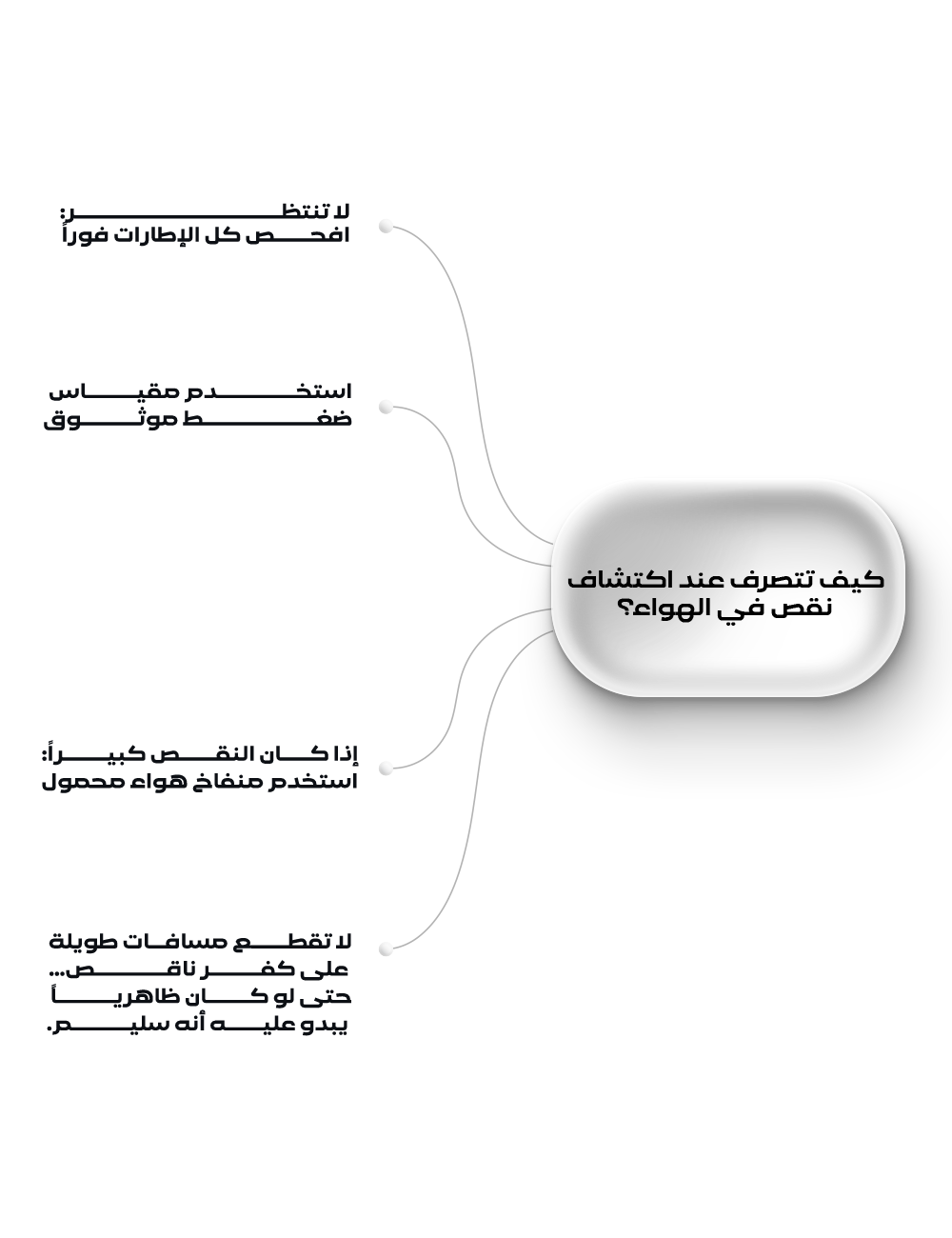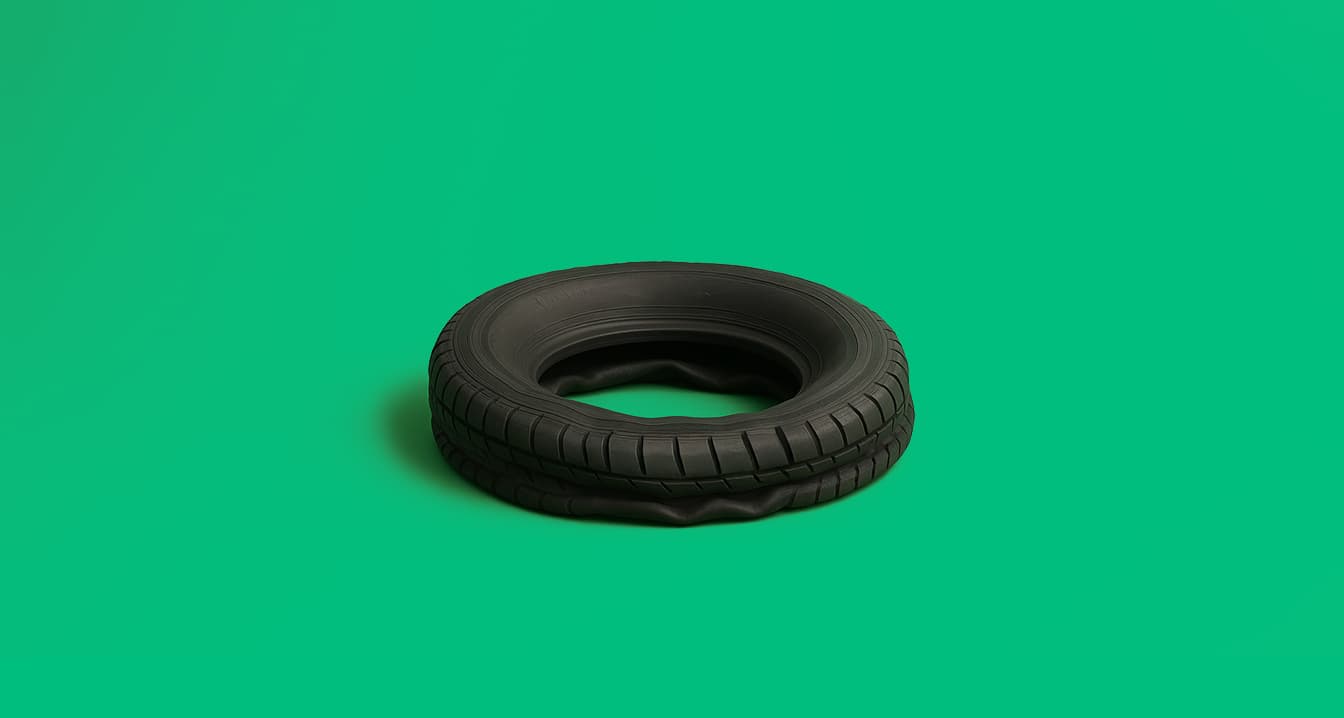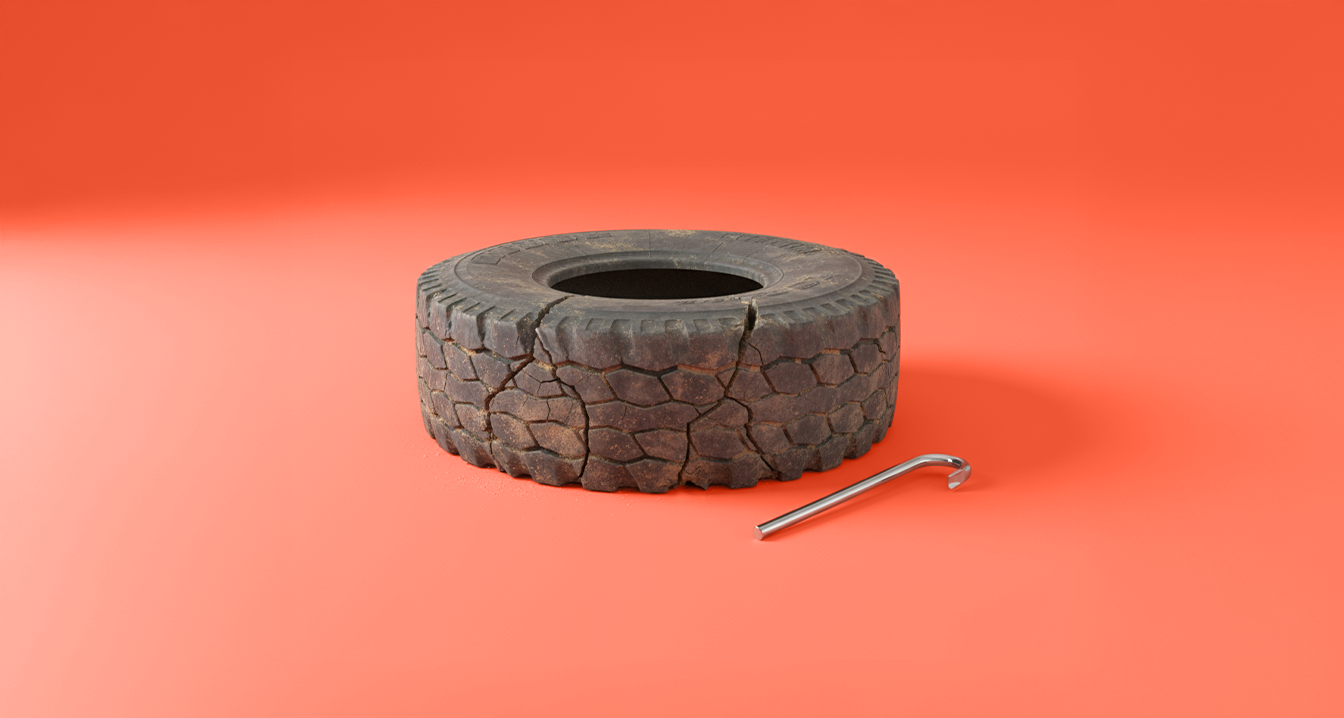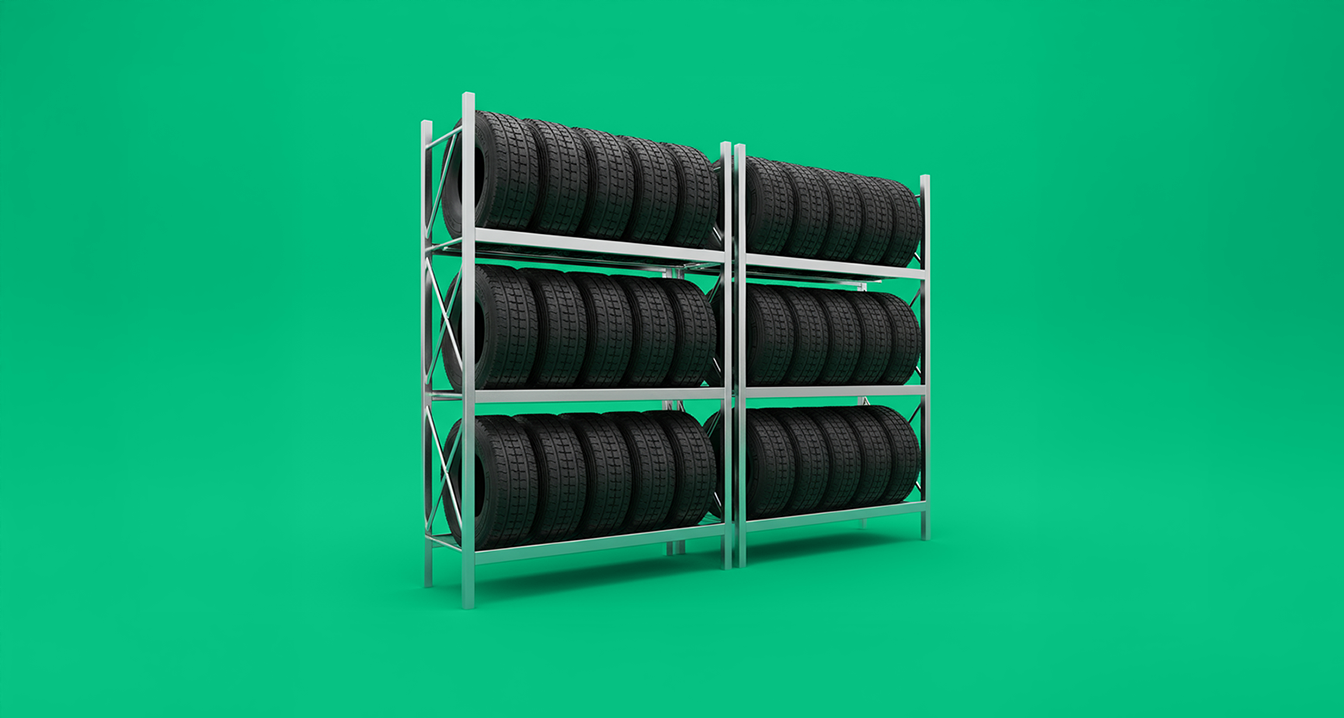It may not make any sound and show no direct effect, but the lack of air pressure in the tires is one of the most hidden causes that lead to serious accidents, in addition to the consumption of an excessive amount of fuel and premature damage to tires.
The problem is not that the tire is suddenly deflated, but that the shortage occurs slowly and quietly, without being noticed until it is too late.
According to a study conducted by the National Highway Safety Administration (NHTSA) in 2022, 1 out of 4 cars on the road travels with a low-air tire without the driver's knowledge. This shortage reduces braking efficiency by up to 17% and increases the likelihood of tire wear by 32%.
In this article, we will reveal to you all the signs that indicate a shortage of air, analyze the common causes behind this shortage, show you how to act smartly, and explain to you in detail why your trail tires hold up more and maintain their pressure?
Why is air pressure a key element in tire safety?
Imagine that a tire, like a muscle in your body, needs a balance between tension and relaxation to perform its function. A tire works efficiently only when it is properly compressed by air. If pressure increases or decreases, this balance is disturbed.
For example, the lack of air makes the tire softer, which leads to deformation of its shape when turning and the temperature of its parts, while excessive pressure makes it too stiff, losing its ability to absorb shocks and becomes prone to cracking at the first bump or hole.
Therefore, we conclude that maintaining optimal pressure is what guarantees performance, safety and longevity of a tire.
In general, the air pressure inside the tire is responsible for:
- Carry the weight of the car.
- Maintain the shape and balance of the frame.
- Provide an even contact surface with the ground.
Therefore, a lack of pressure leads to:
- Increase the distance needed to stop.
- Overheating of the frame.
- Loss of grip, especially when cornering.
A study from the Michelin Research Center has shown that only 10% less air tires lead to 2.5% higher fuel consumption and reduce tire life by 15%.
Signs that there is a lack of air in kefir:
Although the tire does not speak, it sends clear signals when air pressure decreases, signals that appear in the sound of driving, in the behavior of the car, and in how you feel behind the wheel. The smart driver picks up these signs before they turn into real damage or a sudden accident.
In the following paragraphs, we will show the most prominent signs that a tire is suffering from a lack of air, with a detailed explanation of each one.
- Difficulty in steering or heaviness in the steering wheel:
Do you feel that the car is heavy when you turn or when you try to change the lane? This is one of the most important signs that tell you that there is a lack of air in the front tire.
In addition, an insufficiently inflated tire increases movement resistance, making steering harder and putting pressure on the suspension system.
Therefore, pay close attention to the movement of the steering wheel. Are you having difficulty turning around? Do you feel that the steering wheel is heavy? Check the air of the front tire then.
- Deviation of the car in a certain direction:
If you notice that the car is leaning to the right or left while you are on a straight road, check the air pressure in the tires immediately, often one of the side tires minus the air, causing a clear deviation.
- Unfamiliar friction sound:
When the tire is missing, its sides stick to the road in an abnormal way. You hear a loud rubber friction sound. This sound may appear only at low speeds or when turning sharply.
- Excessive fuel consumption:
Do you feel that fuel consumption (gasoline or diesel) has increased? Check the tire pressure. When the pressure drops, the rolling resistance increases, and the engine is forced to make a greater effort.
- Sudden vibrations or concussions:
The lack of air makes the contact surface unbalanced, generating vibrations in the steering wheel or in the car body.
- TPMS system warning:
Modern cars are equipped with a system to monitor tire pressure, so if the alarm lamp lights up, do not ignore it, and check the pressure manually as well. The system does not make mistakes, especially in changing weather conditions
Common causes of air shortage in tires:
The lack of air in tires is not always caused by an obvious nail or a visible hole. Often, the cause is hidden and occurs gradually without being noticed. It may be due to a manufacturing error, a minor valve defect, or even seasonal weather changes.
Below, we will review the most prominent causes that lead to air leakage from tires, explaining how they occur, why they may be repeated, and how can they be avoided with the least possible effort?
- Small holes or slow leaks:
The shortage is often caused by a small hole that is not noticed. This hole causes gradual air leakage. Temporary repair is often not sufficient. Therefore, it is always preferable to check the entire tire in search of the source of the leak.
- Damaged air valve (valve):
A worn or not tightly closed wrap allows air to leak slowly, so it is recommended to change it at every tire change or when you notice a frequent shortage.
- Sidewall wear:
Friction with edges, long standing next to the curb, or excessive loads lead to weakness of the sidewall and air leakage from it.
- Lower temperatures:
Every drop of 10 degrees Celsius leads to a loss of about 1 PSI of air pressure. Therefore, in winter, tires lose air without getting punctured. The reason for this is cold weather, so you should check the tire pressure periodically to avoid a hole in the tire.
- Installation defect or manufacturing defect:
In general, if the tire is installed incorrectly or has an invisible internal crack, these errors may lead to gradual air leakage without any external sign.
According to a report published by Tire Technology International magazine in its June 2022 issue, 68% of cases of air shortage in tires were caused by indirect factors such as damaged valves, slow leaks from the sidewall, or seasonal temperature pressure changes. The report also indicated that 1 in 5 cases of sudden lack of pressure is due to inaccurate installation or a manufacturing defect that was not discovered early.
When is lack of air a serious sign?
According to a study issued by the National Transportation Safety Board in 2021, it was found that more than 31% of tire explosions on highways were due to minor signs of lack of air. The study indicates that most drivers noticed only minor changes in car performance prior to the accident, indicating the danger of ignoring early warnings.
Therefore, it is important to know when a lack of pressure changes from a simple matter to a real risk to your safety. Here are a number of cases that should be dealt with quickly and urgently:
- If you notice a rapid drop in pressure within an hour or less.
- If the problem recurs despite the repair.
- If a bubble or swelling appears in the side wall.
- If you hear a continuous “beeping” sound from the frame.
These conditions mean that the tire is no longer safe and should be changed immediately.
How to act when a deficiency is discovered?

- Do not delay the inspection and use an accurate measurement in the inspection. Check all tires.
- If the shortage is significant, use a portable air blower or go directly to the nearest technician to check and replace the tires.
- Do not walk long distances on Kafr Minus, even if the damage is not visible. The danger is internal.
Why do your trail tires maintain more air pressure than others?
- Ergonomically designed to maintain the internal distribution of air.
- Leakproof rubber materials
- High quality valves prevent pressure loss.
- Advanced manufacturing technology reduces thermal expansion and contraction.
In conclusion...
Tire air is not a simple thing or a secondary matter. It is the basis of safety and economy. Keep an eye on your car, pay attention to every sign, and do not underestimate any minor difference in performance.
Always remember: a full frame is the safe tire.
With your path, you walk the road with confidence... from the first step to the last kilo







